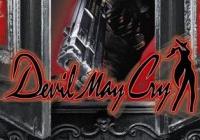Devil May Cry (Nintendo Switch) Review
By Renan Fontes  14.10.2019
14.10.2019

Good game design doesn't age, but even good games show their age. That's just a natural consequence of the passage of time. With a title like the original Devil May Cry, it can be easy to misinterpret its more archaic design decisions as poorly implemented - which by no means are. None of its contemporaries could compete with DMC at the time of its release, and, even now, the Capcom classic holds up as one of the best-paced entries in the genre. It's been improved upon since, but good design keeps Devil May Cry aging like a fine wine.
Devil May Cry can be a difficult title to go back to for those who have dedicated a considerable amount of time to the modern action genre. Hack 'n' slash titles have developed quite a bit since Capcom changed the game in 2001. Even by Devil May Cry 3's release in 2004, the original had already been completely outclassed. Improved upon the formula has been, however, there's still something mesmerising about this first attempt at in-depth three-dimensional action.
Mallet Island is locked by a fixed camera similar to the Resident Evil franchise, but an eye for detail quickly makes it clear that the audience sees everything they need to see at all times. Dante isn't anywhere as mechanically in-depth as he is in later entries, but this simply places a greater emphasis on his small kit - giving players the chance to better familiarize themselves with Alastor and Ifrit.
Despite Dante having access to four distinct Devil Arms (Force Edge, Alastor, Ifrit, and Sparda,) the three swords more or less play the exact same, with some slight differences. Even then, however, there's plenty of depth between Alastor and Ifrit alone to make up for what Force Edge and Sparda lack. Alastor makes fantastic use of pause combos and directional inputs, the former of which still stand out as some of the most fluid to pull off in the series. They're very time sensitive, but that level of skill is often a good thing in the long run.

Ifrit is a much slower weapon, focusing on hand to hand combat, but its combo potential is just as good as Alastor's, if not even better. While slow, Ifrit can chain into some lethally fast combos, killing enemies in no time flat. Timing Ifrit's directional input based attacks correctly can lead to devastating damage. On the other hand, Ifrit isn't nearly as beginner friendly as Alastor, requiring a genuine understanding of the gameplay loop's rhythm.
Devil May Cry typically handles enemy design really well, but the original operates on a much higher level when it comes to enemy placement, attacks, and patterns. This utilizes a more arcade-like style of pacing, keeping stages just a few minutes long, and emphasizing level design that rewards familiarity - incentivising replay-ability. Enemies are very thoughtfully integrated into stages as a result.
Dante is never in a position of genuine weakness against enemies. His move set widens to the point where he can comfortably tackle anything in his path. More importantly, enemies are never guaranteed hits. While they're deadly, it's more than possible to get through all 23 story missions without taking a single hit of damage. Enemies are designed around Dante, their placement carefully crafted around the stages they're in, and their patterns gradually escalate from Normal to Hard to Dante Must Die, giving those challenging the three difficulties time to adjust.

Most understandably won't, but it is deeply beneficial playing Devil May Cry up through Dante Must Die. All things considered, it's the complete experience as Normal and Hard exist mainly to prepare players for it. At the same time, there's no shame in stopping after Normal. Although one play-through will end up fairly short (anywhere from three to six hours, depending on player competence), it's a dense play-through.
The level design here is the best the franchise has seen, and it's likely to remain that way. Missions are expertly paced and crafted, making use of overlapping areas in a way that still gives each mission a distinct layout and order of progression. The nature of Mallet Island also lends itself to some really creative backtracking - backtracking that often results in secret missions and other goodies.
As development had roots in the Resident Evil franchise, Mallet Island is a much more cohesive environment than later entries in the DMC series make use of. Dante can interact with and examine just about everything in his path. There's so much unique flavour text present, it's almost baffling. For such a fast-paced action experience, the "adventure" segments are very slow paced, and methodical.

This attention to these calmer moments is necessary, as it helps give Devil May Cry a distinct atmosphere. There's an element of genuine horror present that honestly overpowers Dante's cheeky behaviour and one-liners. The franchise would quickly dabble in the grotesque and horrifying again, but never on the same level as Team Little Devils. Mallet Island is unsettling and moody - a place of legitimate danger.
At the core of the experience, though, lies an emphasis on boss fights. While Dante fights many of the same bosses multiple times, each encounter is distinctly designed. Either by making use of a new setting or varying up the boss' move set, each new boss fight offers a unique challenge. While some bosses are better than others, this is the rare action title with no real weak links in the boss roster.
Time has been kind to this Capcom classic. It's noticeably nowhere as in-depth as its successors, but nothing quite compares to the original Devil May Cry. A hack 'n' slasher with arcade-like pacing, and a gothic-horror atmosphere, Dante's first outing still stands out as one of his best.

Cubed3 Rating
Great - Silver Award

For the title that essentially originated the modern hack 'n' slash genre, Devil May Cry holds up tremendously well. Although later entries would flesh out the combat even further, the original's simpler mechanics shine elegantly. Dante is a much more complex character to control by Devil May Cry 5, but his original iteration is already loaded with mechanical depth. Between Alastor and Ifrit, combat isn't hurting for variety, and the title's stellar level design keeps play-throughs fast-paced and pleasantly arcade-y in nature. If anything, time makes it easy to appreciate Devil May Cry all the more.

![]() 8/10
8/10
![]() 0
(0 Votes)
0
(0 Votes)
 Out now
Out now  Out now
Out now  Out now
Out now  Out now
Out now Comments
Comments are currently disabled

 Sign In
Sign In Game Details
Game Details Subscribe to this topic
Subscribe to this topic Features
Features





 Top
Top

